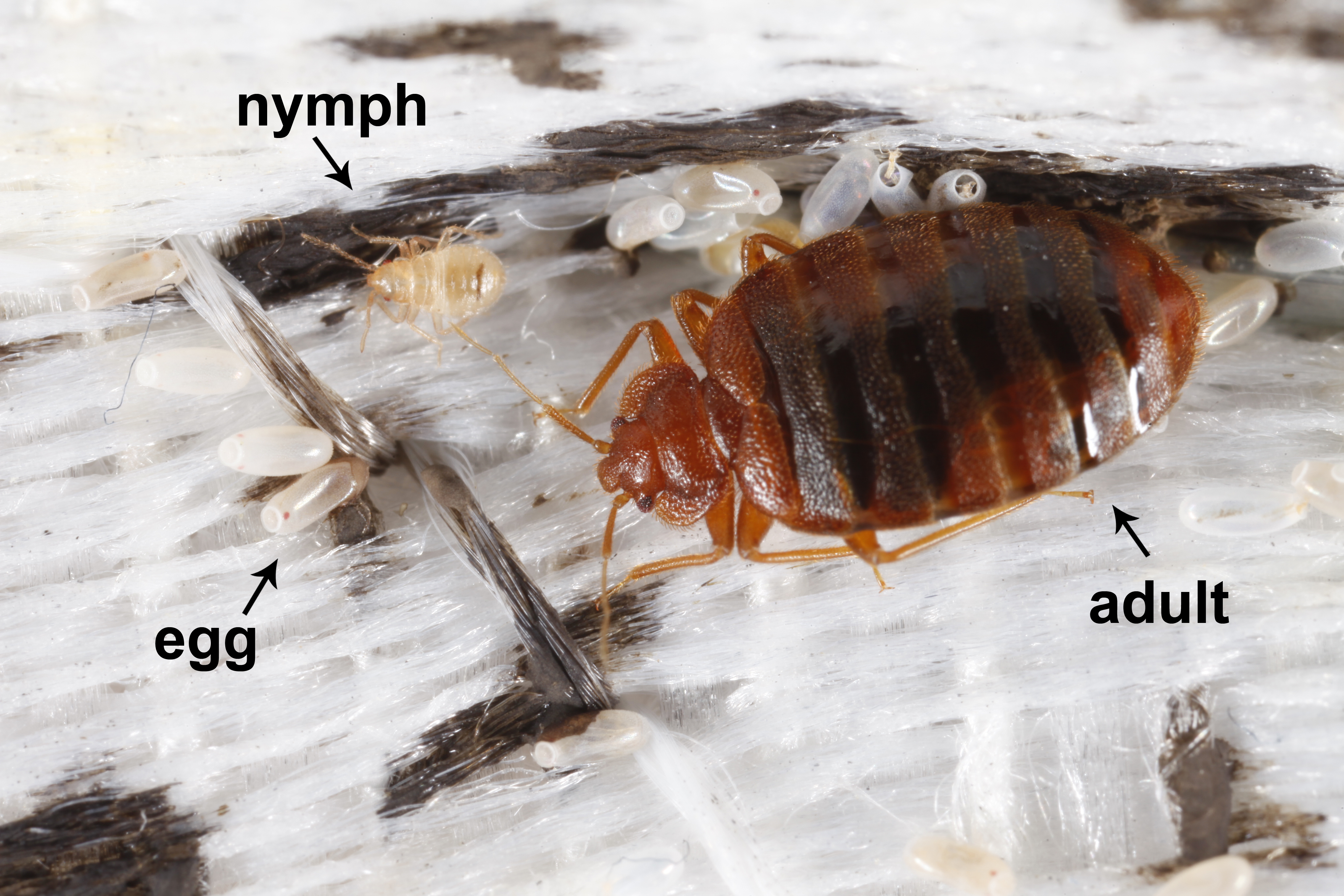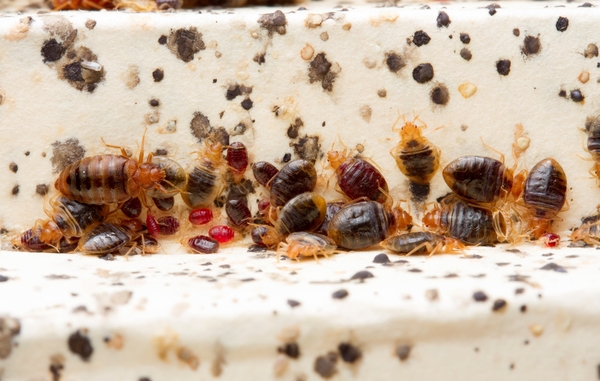To prevent bed bugs from spreading to other rooms, thoroughly inspect and clean all areas where bed bugs are suspected. Seal any cracks or crevices in walls, baseboards, and furniture to prevent their movement.
Additionally, wash and dry all bedding, clothing, and linens on high heat to eliminate any bed bugs and their eggs. Bed bugs are notorious for their tenacious ability to spread and infest multiple areas within a home. This can be a major source of frustration for homeowners, as bed bug infestations are not only difficult to eradicate but also have the potential to spread to other rooms.
As such, it’s crucial to take proactive measures to prevent these pests from moving to other areas of the house. By following a few simple steps and implementing preventative strategies, it’s possible to contain and prevent the spread of bed bugs to other rooms in your home.
Identifying Bed Bugs
To prevent bed bugs from spreading to other rooms, it’s crucial to identify and address the infestation promptly. Begin by thoroughly inspecting mattresses, furniture, and baseboards for signs of bed bugs, such as blood stains, shed skins, or fecal matter.
If bed bugs are found, take immediate action to contain the infestation and prevent their migration to other areas of the home. Regular vacuuming and washing of linens can also help to minimize the spread of bed bugs.
Physical Appearance Of Bed Bugs
Bed bugs are small, reddish-brown insects with flat bodies.
Adult bed bugs are about the size of an apple seed.
Young bed bugs (nymphs) are smaller and lighter in color.
Signs Of A Bed Bug Infestation
- Bloodstains: Red or brown stains on sheets and pillowcases.
- Dark spots: Fecal matter and exoskeleton sheddings.
- Musty odor: A sweet, musty smell in the infested room.
Identifying Bed Bugs: Knowing how to recognize bed bugs is crucial in preventing their spread to other rooms.

Credit: extension.entm.purdue.edu
Understanding Bed Bug Behavior
Understanding Bed Bug Behavior is crucial in effectively preventing the spread of these pesky insects to other rooms. Bed bugs are adept at hiding, moving, and thriving in various environments, making it essential to grasp their behavior patterns.
Habitat And Hiding Spots
Bed bugs typically reside in cracks and crevices near sleeping areas, including mattress seams and headboards.
Nocturnal Nature
Bed bugs are active primarily during the night, making detection challenging during the daytime.
Ability To Travel And Spread
Bed bugs can easily attach to clothing, luggage, or furniture and spread to other rooms, increasing the infestation.
Preventing Bed Bug Infestation
Preventing bed bug infestation and stopping them from spreading to other rooms is crucial. Implement these effective techniques: regular cleaning, decluttering, sealing cracks, using mattress encasements, washing and drying bedding on high heat, and inspecting second-hand furniture. Safeguard your home to prevent these unwanted pests from taking over.
Inspecting Second-hand Furniture
When it comes to preventing a bed bug infestation, one crucial step is carefully inspecting any second-hand furniture you bring into your home. Bed bugs are notorious hitchhikers, and infested furniture can introduce them to your living space. Before purchasing or accepting used furniture, thoroughly examine every nook and cranny to ensure there are no signs of these tiny pests.
Sealing Cracks And Crevices
Don’t give bed bugs a chance to sneak into other rooms through cracks and crevices in your walls. Regularly check for any gaps or openings in the walls, baseboards, or electrical outlets. Use a sealant to close up these entry points, making it difficult for the bugs to move around and infest other areas of your home.
Using Protective Covers On Mattresses And Box Springs
Protective covers are an excellent line of defense against bed bugs. Investing in specially designed encasements for your mattresses and box springs creates an impenetrable barrier, preventing the bugs from finding their way in or out. Be sure to choose covers labeled as bed bug-proof and regularly inspect them for any rips or tears.
Regularly Vacuuming And Laundering Linens
Maintaining cleanliness is crucial in your fight against bed bug infestations. Regularly vacuuming your mattresses, carpets, and upholstered furniture can help remove any existing bugs or eggs. Additionally, washing your bed linens, including sheets, pillowcases, and blankets, in hot water and drying them on high heat can effectively eliminate any bed bugs that may be lurking.
Reducing Clutter In The Room
Keep your living space as clutter-free as possible to limit the potential hiding spots for bed bugs. These pests thrive in crowded areas where they can easily go unnoticed. By reducing clutter and organizing your belongings, you lessen the chances of bed bugs finding a place to settle and multiply.
Treating Infested Rooms
To prevent bed bugs from spreading to other rooms, it’s crucial to promptly treat any infested areas. Start by thoroughly cleaning and vacuuming the infested room, focusing on bedding and furniture. Seal and dispose of any infested items properly to contain the problem and prevent further spread.
Hiring Professional Exterminators
“`When it comes to treating a bed bug infestation, hiring professional exterminators is often the most effective option. Professional exterminators are equipped with the knowledge and expertise to identify and eradicate bed bugs from your home. They can provide thorough inspections and targeted treatments to eliminate both adult bed bugs and their eggs, preventing them from spreading to other rooms.“`htmlUsing Insecticides And Sprays
“`Insecticides and sprays can be effective in treating infested rooms, but it’s important to use them cautiously and according to the manufacturer’s instructions. When using insecticides and sprays, it’s crucial to focus on areas where bed bugs are likely to hide, such as cracks, crevices, and furniture seams. Additionally, it’s essential to use products specifically formulated for bed bug extermination, as using the wrong type of insecticide can be both ineffective and potentially harmful.“`htmlSteam Cleaning
“`Steam cleaning is an eco-friendly and chemical-free method for eliminating bed bugs from infested items and surfaces. High-temperature steam can effectively kill bed bugs and their eggs, making it a safe and efficient option for treating mattresses, furniture, and other infested items. However, it’s essential to ensure that the steam reaches a high enough temperature and is applied thoroughly to all infested areas to achieve the desired results.“`htmlFreezing Infested Items
“`Another method for treating infested items is freezing. By exposing infested items to sub-zero temperatures for an extended period, it’s possible to kill bed bugs and their eggs. This approach is particularly useful for items that cannot be treated with steam or insecticides, such as books, electronics, or delicate fabrics. However, it’s crucial to ensure that the items are frozen for a sufficient duration to effectively exterminate the bed bugs.In conclusion, treating infested rooms requires thorough and targeted methods to eradicate bed bugs and prevent their spread to other areas of your home. Whether it’s hiring professional exterminators, using insecticides and sprays, steam cleaning, or freezing infested items, each method plays a vital role in eliminating bed bugs and ensuring a bed bug-free environment.Isolating Infested Areas
When dealing with a bed bug infestation, it’s crucial to prevent these pests from spreading to other areas of your home. By isolating the infested areas, you can effectively contain the bed bugs and prevent their migration to other rooms. Here are some effective strategies to create a barrier and confine the infestation:
Creating A Physical Barrier
To prevent bed bugs from traveling to other rooms, you can create a physical barrier by sealing off the infested area. Use caulk or sealant to close off any crevices or cracks in walls, baseboards, and electrical outlets. This will help block the movement of bed bugs to adjoining rooms.
Installing Door Sweeps
Installing door sweeps on all bedroom doors can help prevent bed bugs from spreading to other areas. These sweeps create a tight seal at the bottom of the door, limiting the movement of bed bugs in and out of the infested room.
Using Plastic Mattress And Box Spring Encasements
Encasing mattresses and box springs with plastic covers can contain bed bugs and prevent them from spreading. These specialized encasements create a barrier that traps existing bed bugs inside and prevents new infestations from taking hold.

Credit: blog.spotta.co
Educating Residents And Guests
Preventing the spread of bed bugs to other rooms is crucial to maintain a comfortable and safe living environment. Educating residents and guests about bed bug identification and prevention plays a vital role in this effort. By increasing awareness and providing necessary guidelines, we can work together to combat the spread of these pesky insects.
Informing Residents About Bed Bug Identification And Prevention
It is important to inform residents about the identification and prevention of bed bugs to equip them with the knowledge needed to recognize these pests and take appropriate action. Here are some key points to highlight when educating residents:
- Bed bug physical characteristics: Educate residents about the appearance of bed bugs, which are small, oval-shaped insects about the size of an apple seed. They are usually brown or reddish-brown in color and can easily hide in mattresses, furniture, and cracks.
- Signs of infestation: Explain to residents the common signs of bed bug infestation, such as itchy bites in a linear or clustered pattern, bloodstains on sheets, and dark spots (excrement) on bedding or furniture.
- Prevention methods: Provide residents with practical tips to prevent bed bugs from entering their rooms, such as regularly inspecting and vacuuming mattresses, sealing cracks and crevices, and using bed bug-resistant mattress and pillow encasements.
Providing Guidelines For Travelers And Guests
Travelers and guests can unknowingly introduce bed bugs into a premises, making it essential to provide them with clear guidelines to prevent such incidents. Here are some guidelines to share with travelers and guests:
- Inspect luggage: Advise travelers to inspect their luggage thoroughly before packing and after returning from a trip. Encourage them to look for any signs of bed bugs and promptly wash and dry all clothing on high heat to eliminate any potential hitchhikers.
- Use luggage racks: Recommend that travelers and guests utilize luggage racks rather than placing their suitcases on the bed or floor. This minimizes the chance of bed bugs crawling into their belongings.
- Notify staff: Encourage guests to inform the staff immediately if they suspect a bed bug infestation in their room. It is important that they do not change rooms or move to another location without notifying the management first.
- Proper prevention while staying: Remind guests to keep their belongings, such as clothing and bags, elevated and away from beds and furniture. Additionally, suggest they avoid placing their clothes in dressers or closets, as these areas can be potential hiding spots for bed bugs.
By educating both residents and guests, we can create a proactive environment that greatly reduces the risk of bed bug spread. Awareness, identification, and prevention are key to keeping our living spaces free from these unwelcome intruders.
Monitoring And Early Detection
Regular Inspections
Make it a habit to regularly check for bed bugs in all rooms.
Using Bed Bug Monitors
Place bed bug monitors strategically to detect any signs early.
Promptly Addressing Any Signs Of Bed Bugs
Take immediate action upon spotting bed bug traces to prevent spreading.

Credit: content.ces.ncsu.edu
Taking Action Outside The Infected Room
To contain bed bugs, promptly isolate and treat the infested room. Clean and quarantine belongings before moving them out. Vacuum and seal items in plastic to prevent spreading. Inspect surrounding rooms, wash and dry linens on high heat, and monitor for signs of bed bugs to limit their migration.
Treating Adjacent Rooms And Hallways
“`Taking action outside the infected room is crucial to prevent bed bugs from spreading further. Treating adjacent rooms and hallways is essential to contain the infestation.“`htmlInspecting And Treating Luggage And Clothing
“`Ensure you carefully inspect and treat luggage and clothing that were in the infested room to avoid transporting bed bugs to other areas.Bed bugs can easily hide in luggage and clothing, promptly inspect and treat them to prevent further infestation.Frequently Asked Questions Of How To Prevent Bed Bugs From Spreading To Other Rooms?
How Do Bed Bugs Spread To Other Rooms?
Bed bugs can spread through luggage, clothing, or furniture. They are excellent hitchhikers and can move easily between rooms.
What Are The Signs Of Bed Bugs Spreading?
Common signs include itchy red bites, bloodstains on sheets, and musty odor. Check for live bugs, shed skins, or tiny eggs.
Can Bed Bugs Spread Through Air Vents?
Bed bugs don’t travel through air vents, but they can move through walls or floors to infest neighboring rooms.
What Measures Can Prevent Bed Bugs From Spreading?
Regularly vacuuming, sealing cracks, and inspecting secondhand furniture can help prevent the spread of bed bugs.
Conclusion
To keep bed bugs from spreading to other rooms, it is crucial to take immediate and effective action. By adopting preventative measures such as regular inspection, decluttering, and washing bedding frequently, you can minimize the risk of infestations. Additionally, sealing cracks and crevices, using mattress encasements, and vacuuming regularly can further deter these troublesome pests.
Remember, early detection and proper maintenance are key to preventing the spread of bed bugs throughout your home. Stay vigilant, and don’t let them invade your spaces!
Related posts:

I’m MD Tanvir, and I bring years of expertise gained from working closely with pest control companies to the forefront. My journey in the industry has inspired me to launch Bug Battler, a platform aimed at equipping people with the know-how to combat pests autonomously. Through Bug Battler, I aim to empower individuals with practical insights to tackle pest infestations effectively.

